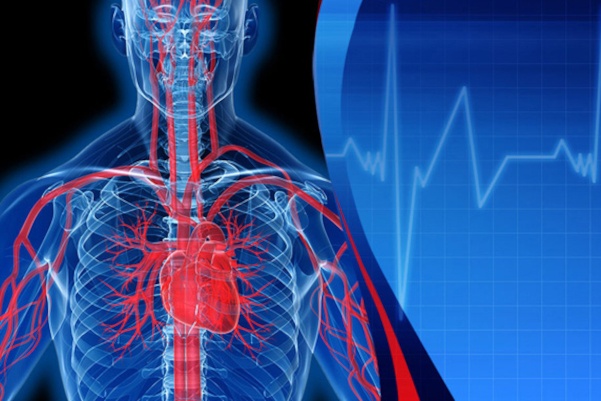
Pathologies of the left ventricle: dilated cardiomyopathy
Dilated cardiomyopathy is a disease of the heart in which the left ventricle, which pumps blood into the circulation, is enlarged and cannot contract or shorten normally
Dilated cardiomyopathy is a disease of the heart muscle in which the left ventricle, the heart chamber that pumps blood into the circulation, is enlarged and fails to contract or shorten normally.
This means that for each heartbeat, the heart sends less blood into the circulation than normal.
The term ‘dilated’ indicates an increase in size and cavities, often with reduced ability to contract.
The frequency in the general adult population is about 1 in 2500 cases, but in children it is considered a rare disease and its annual frequency in paediatric age is 0.57 cases per 100,000 persons per year.
Dilated cardiomyopathy can be primary (without an apparent haemodynamic cause for ventricular dysfunction), caused by other factors or by structural alterations of the heart
In many cases, isolated dilated cardiomyopathy is caused by alterations (mutations) in our DNA genes (genetically determined forms).
The disease can be caused by mutations in a large number of different genes.
Currently, it is possible to identify the genetic basis in about 60 per cent of affected persons.
Dilated cardiomyopathy can occur as a result of myocarditis
This is an inflammatory change in the heart muscle, often caused by viral infections.
Not all children with dilated cardiomyopathy show symptoms.
There is a chronic and an acute phase of the disease.
The presence of symptoms may depend on the child’s stage of life and does not always reflect the severity of the underlying disease.
Possible symptoms of dilated cardiomyopathy include:
- Lower exercise tolerance than in other children, with difficulty breathing, shortness of breath and/or shortness of breath;
- In infants and younger children the most frequent manifestation is reduced feeding, dyspnoea during meals with profuse sweating, hypo- or hyperresponsiveness;
- Much less frequent: heart palpitations and/or syncope (sudden, transient loss of consciousness)
When there is a suspicion of dilated cardiomyopathy, the child must be taken care of by a team of several specialists
The investigations necessary for diagnosis include:
- Measurement of heart rate, blood pressure, respiratory rate, peripheral oxygen saturation and body temperature;
- Cardiac examination with auscultation of the heart and detection of signs of heart failure (swelling or oedema of the legs, engorgement of the veins and liver and sometimes abnormal heart rhythm);
- Chest X-ray;
- Electrocardiogram (ECG);
- Echocardiogram;
- Cardiopulmonary test or exercise electrocardiogram;
- Recording of heart rhythm for 24 hours (Holter ECG);
- Blood tests;
- Cardiac magnetic resonance imaging;
- Occasionally cardiac catheterisation;
- Other investigations can be set on the basis of the specific clinical picture.
In the case of suspected hereditary transmission, an in-depth genetic investigation (when the gene defect has been identified in the affected relative) may be useful to detect the responsible gene mutation, possibly even before its clinical manifestation.
There are currently no therapies that make it possible to cure this disease.
However, there are treatments that can control and restore cardiac function, significantly reduce symptoms and improve the quality of life of these children:
- The treatment of dilated cardiomyopathy is primarily and initially medical and is very complex;
- In selected and extreme cases, mechanical assistance with an artificial heart may be indicated;
- In the final stages of the disease, cardiac transplantation is necessary.
The prognosis of dilated cardiomyopathy varies from case to case, depending on the worsening and/or exacerbation of symptoms
Medical treatment can generally control symptoms and allow patients to be active for months or even years.
The key aspect is periodic monitoring of the clinical picture.
Read Also:
Emergency Live Even More…Live: Download The New Free App Of Your Newspaper For IOS And Android
Myocardial Infarction: Causes, Symptoms And Risk Factors
Dilated Cardiomyopathy: What It Is, What Causes It And How It Is Treated
Heart Disease: What Is Cardiomyopathy?
Inflammations Of The Heart: Myocarditis, Infective Endocarditis And Pericarditis
Heart Murmurs: What It Is And When To Be Concerned
Broken Heart Syndrome Is On The Rise: We Know Takotsubo Cardiomyopathy
Cardiomyopathies: What They Are And What Are The Treatments
Alcoholic And Arrhythmogenic Right Ventricular Cardiomyopathy
Difference Between Spontaneous, Electrical And Pharmacological Cardioversion
What Is Takotsubo Cardiomyopathy (Broken Heart Syndrome)?


